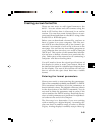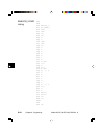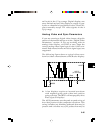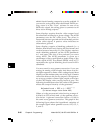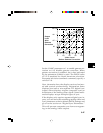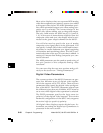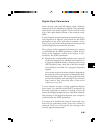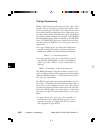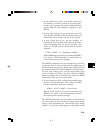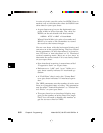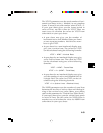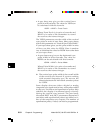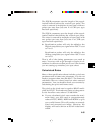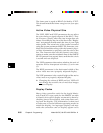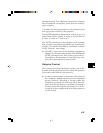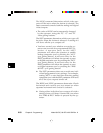
6-51
• A spec sheet may give you pixel counts for
the number of active pixels as well the hori-
zontal sync front porch, pulse width and back
porch. Add all four numbers together to get
HTOT.
• A spec sheet may give you a dot clock or pixel
rate. Divide this rate by the horizontal rate and
round the result to the nearest even integer.
• A spec sheet may give you the number of
horizontal active pixels and express the hori-
zontal blanking time in micro-seconds. The
value for HTOT can be calculated with this
formula:
HTOT = HRES / (1 - (Blanking x HRAT))
Where Blanking is in units of seconds and HRAT
is in units of Hz. Remember to round the re-
sult to the nearest even integer.
The HSPD parameter sets the number of pixels be-
tween the end of active video and the beginning of
the horizontal sync pulse. Many spec sheets refer to
this parameter as the “Horizontal Sync Front Porch.”
If your spec sheet gives you the horizontal front
porch in units of pixels, use this value for HSPD.
Here is another way to calculate the value for HSPD
from other data on your spec sheet:
• A spec sheet may give you the horizontal front
porch in micro-seconds. The value for HSPD
can be calculated with this formula:
HSPD = HTOT x HRAT x Front Porch
Where Front Porch is in units of seconds and
HRAT is in units of Hz. Remember to round
the result to the nearest integer.
The HSPW parameter sets the width of the horizon-
tal sync pulse in units of pixels. Many spec sheets
refer to this parameter as “Horizontal Sync Pulse
Width.” If your spec sheet gives you the pulse width



